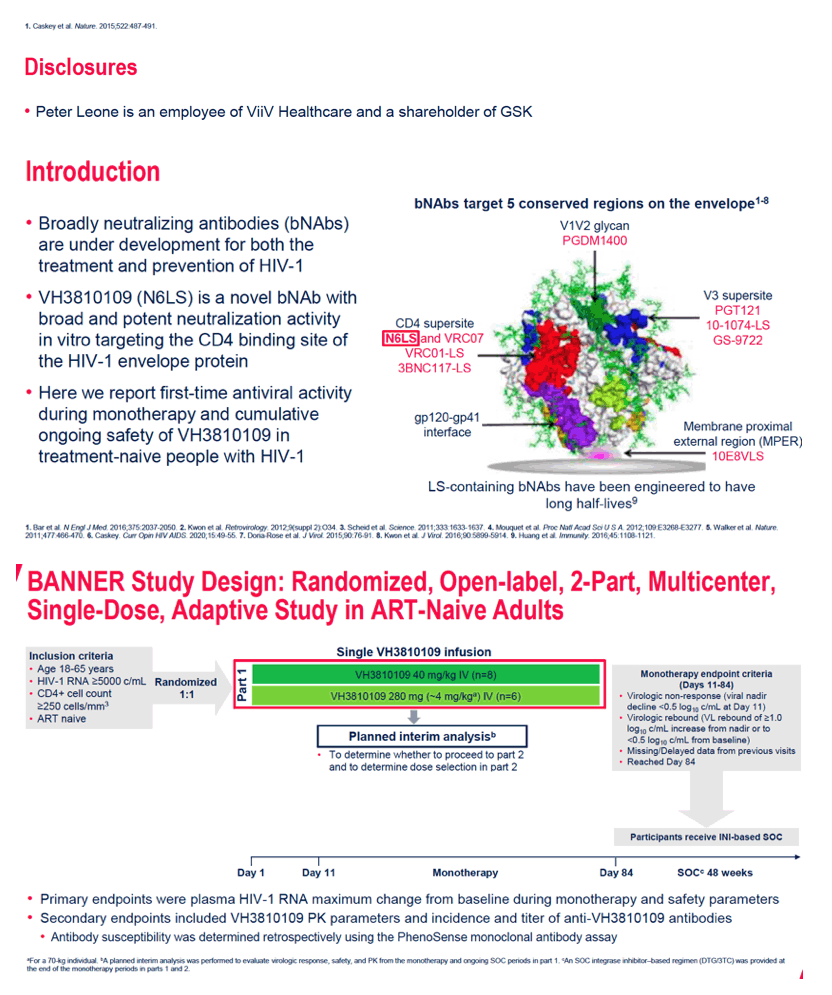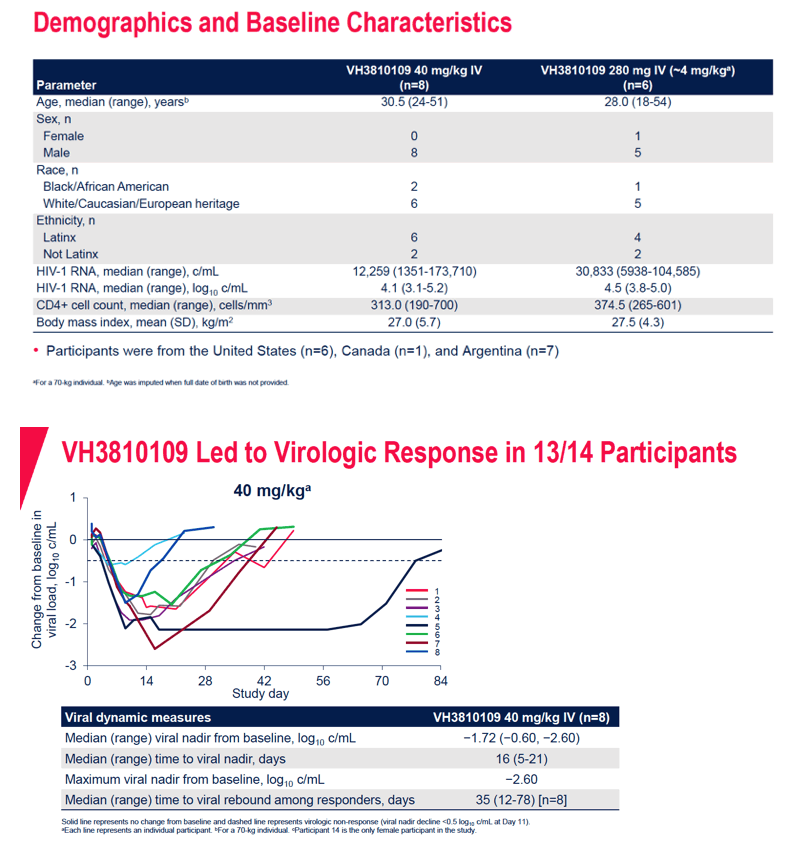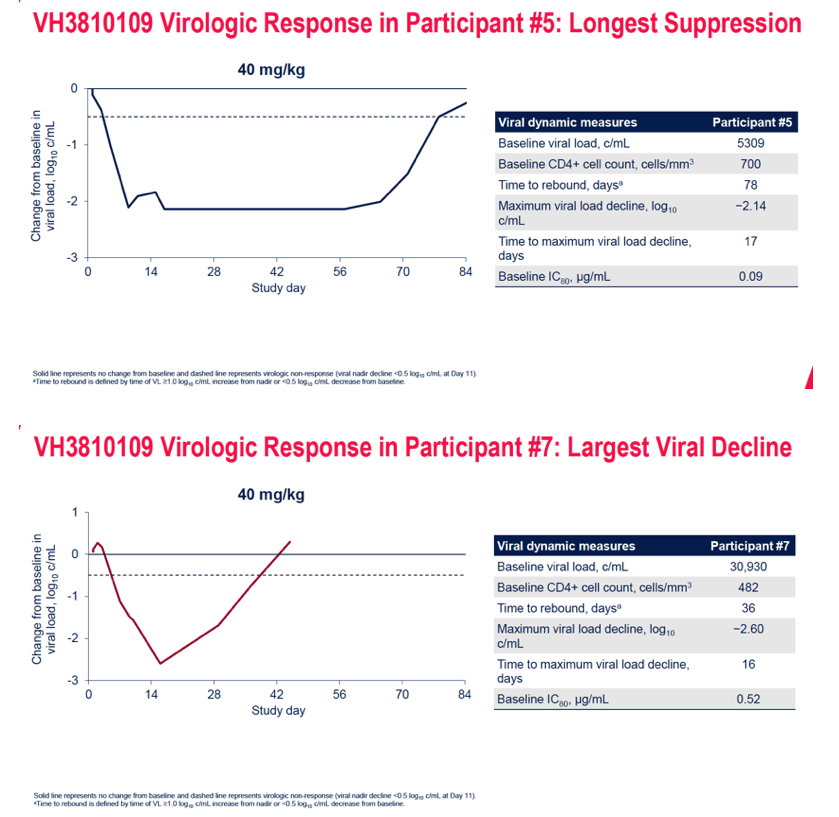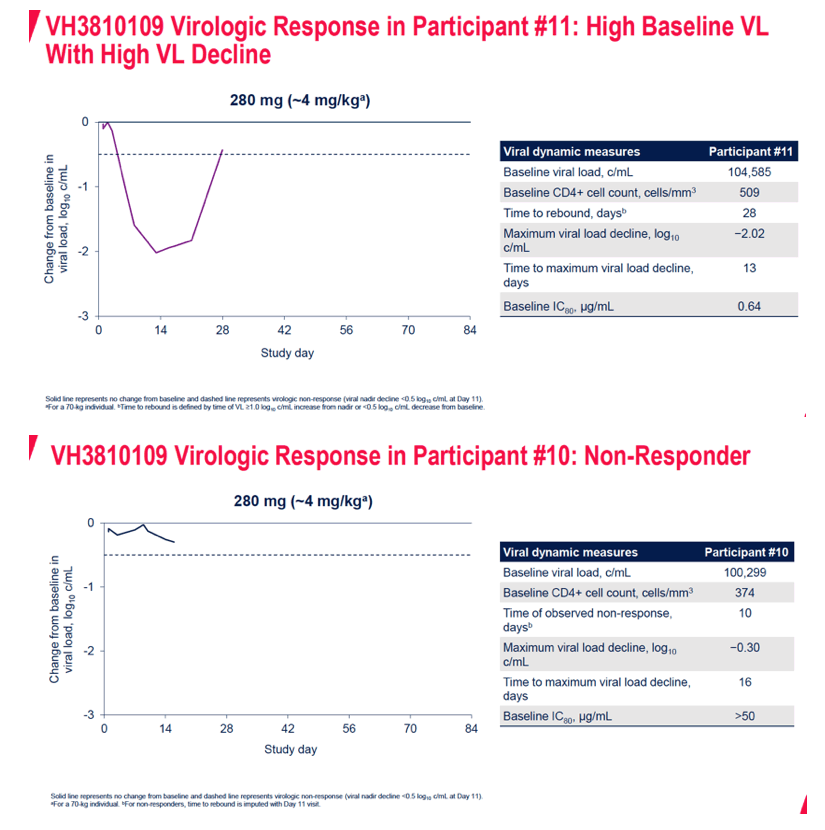 |
 |
 |
| |
Single Infusion of VH3810109 bNAb Controls HIV at Two Doses
|
| |
| |
HIV Drug Therapy Glasgow, October 23-26, 2022
Mark Mascolini
VH3810109, a broadly neutralizing antibody (bNAb), promoted anti-HIV responses in 13 of 14 people with a single 40-mg/kg or 280-mg (∼4 mg/kg) infusion [1]. At the approximately 10-fold lower dose, 280 mg, VH3810109 was more efficacious and durable than other bNAbs given at similarly low doses.
The new bNAb, which targets the CD4 binding site on the envelope protein of HIV-1, has shown broad neutralizing activity in cell studies. The trial reported in Glasgow is the first to test VH3810109 in people with HIV, none of them with antiretroviral experience. BANNER is a randomized, open-label, multicenter trial that enrolled adults with a viral load at or above 5000 copies and a CD4 count at or above 250 [3].
Researchers in Argentina, the United States, and Canada randomized 8 people to the 40-mg/kg dose and 6 to the ∼4-mg/kg dose. Participants got only their bNAb infusion up to 84 days in responders or until they reached virologic nonresponse (less than a 0.5 log10 drop in viral load at day 11) or rebound (a viral load 1-log or more above the attained nadir or less than 0.5 log10 from baseline). When participants reached that endpoint or day 84, they began a standard integrase inhibitor regimen.
The 8 people in the 40-mg/kg arm and the 6 in the 4-mg/kg arm had median ages of 30.5 and 28.0; all were men except 1 woman in the ∼4-mg/kg group; 3 overall were black, 11 white, and 10 Latinx. Median pretreatment viral load stood at 12,259 copies in the 40-mg/kg arm (range 1351 to 173,710) and 30,833 copies in the ∼4-mg/kg arm (range 5938 to 104,585). Respective starting median CD4 counts were 313 and 374.5, and median body mass index 27 and 27.5 kg/m2 (in the overweight range).
Thirteen of 14 people had a virologic response. Among the 8 participants getting 40 mg/kg, median viral load drop from baseline measured -1.72 log10 (range -0.60 to -2.60 log10). Median time to lowest viral load at this dose was 16 days (range 5 to 21) and median time to viral rebound among responders 35 days (range 12 to 78). The one nonresponder, who got the lower ∼4-mg/kg dose, began treatment with a viral load of 100,299 copies. This person's viral load never fell more than 0.30 log10 through 16 days of observation.
The investigators noted that virologic responses in the ∼4-mg/kg group were stronger and lasted longer than responses to other bNAbs given at similarly low doses [2]. Yet the investigators calculated approximately 10-fold lower VH3810109 exposure with the lower dose.
The researchers recorded no adverse events worse than grade 2 and no serious adverse events. They counted 6 drug-related adverse events-3 in the 40-mg/kg group and 3 in the ∼4-mg/kg group-abdominal pain in 2 and gastrointestinal pain, pruritis, asthenia, and myalgia in 1 each. All drug-related adverse events were grade 1. There were 2 injection site reactions, both with the higher dose, both grade 1.
References
1. Leone P, Ferro A, Rolle CP, et al. VH3810109 (N6LS) reduces viremia across a range of doses in ART-naive adults living with HIV: proof of concept achieved in the phase IIa BANNER (207959, NCT04871113) study. HIV Drug Therapy Glasgow, October 23-26, 2022. Abstract O34.
2. Caskey M, Klein F, Lorenzi JC, et al. Viraemia suppressed in HIV-1-infected humans by broadly neutralizing antibody 3BNC117. Nature. 2015;522:487-491. doi: 10.1038/nature14411. https://www.nature.com/articles/nature14411
3. ClinicalTrials.gov. A study to evaluate the antiviral effect, safety and tolerability of GSK3810109A in viremic human immunodeficiency virus (HIV)-1 infected adults. ClinicalTrials.gov identifier NCT04871113. https://clinicaltrials.gov/ct2/show/NCT04871113






|
| |
|
 |
 |
|
|